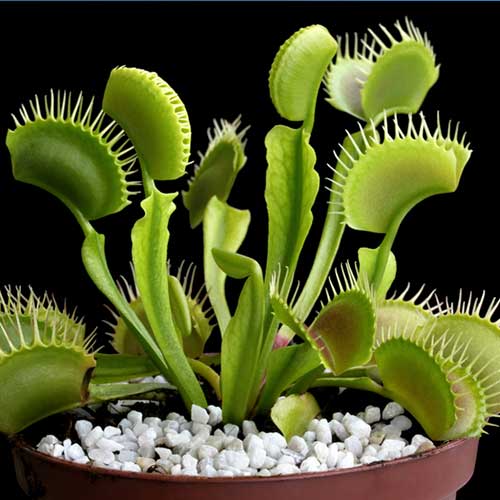The Venus Flytrap is one of the most iconic carnivorous plants in the world. Known for its rapid snapping mechanism and its ability to digest insects, this plant has fascinated scientists, gardeners and nature lovers for centuries. Native to the wetlands of North and South Carolina in the United States, the Venus Flytrap stands out as a true example of nature’s ingenuity.
A Natural Trap With Precision Movement
The Venus Flytrap has specialized leaves that act as powerful traps. Each trap consists of two lobes lined with tiny trigger hairs. When an insect touches these hairs twice in quick succession, the trap snaps shut. This mechanism helps the plant avoid wasting energy on false alarms such as falling debris or raindrops. Once closed, the trap forms a sealed chamber where digestion begins.
Adapted to Nutrient Poor Soil
The Venus Flytrap grows in soils that lack essential nutrients. To survive in these challenging conditions, the plant supplements its diet by capturing insects. Digestive enzymes break down the prey and allow the plant to absorb nitrogen and other nutrients that are scarce in its environment. This unique adaptation enables the Venus Flytrap to thrive where many other plants cannot.
How the Trapping Mechanism Works
The speed of the trap has long intrigued researchers. The movement is powered by changes in cell pressure and elasticity rather than muscles. After an insect is captured, the trap tightens over several hours, ensuring the prey cannot escape. Digestion usually takes about ten days, after which the trap reopens and is ready to capture something new.
A Plant With Stunning Visual Appeal
Beyond its remarkable hunting ability, the Venus Flytrap is visually striking. Its bright green leaves and red tinted traps create a dramatic appearance that makes it a favorite among collectors. When grown in the right conditions, the plant produces small white flowers that rise on tall stems above the traps.
Challenges in the Wild
The Venus Flytrap is considered vulnerable in its natural habitat. Urban development, illegal poaching, and changes in water systems have reduced its wild population. Conservation efforts and responsible cultivation are essential to ensure this unique plant continues to survive for future generations. Many growers now cultivate Venus Flytraps from seeds or tissue culture to reduce pressure on wild populations.
Caring for the Venus Flytrap
For plant enthusiasts, growing a Venus Flytrap requires understanding its specific needs. It thrives in bright sunlight, pure water such as rainwater, and nutrient poor soil. Overfeeding or using fertilizer can harm the plant, while maintaining a winter dormancy period is crucial for long term health.
Final Thoughts
The Venus Flytrap is more than a carnivorous curiosity. It is a brilliant example of evolution and adaptation. Its fast acting trap, specialized diet, and striking appearance make it one of the most remarkable plants on Earth. Learning about the Venus Flytrap not only highlights the wonders of nature but also reminds us of the importance of conservation.





